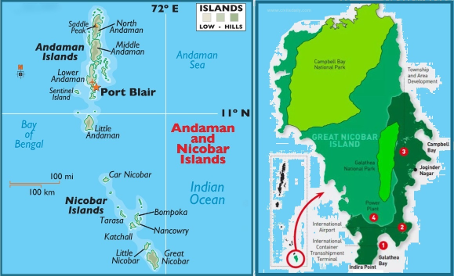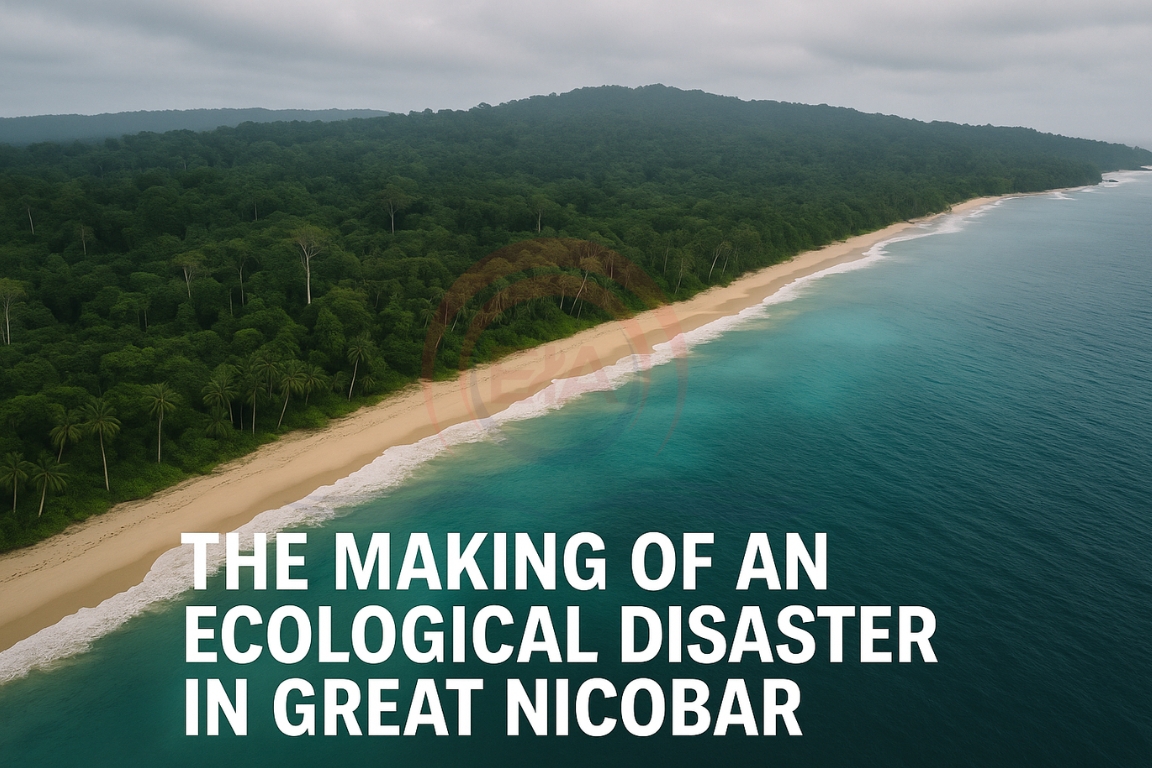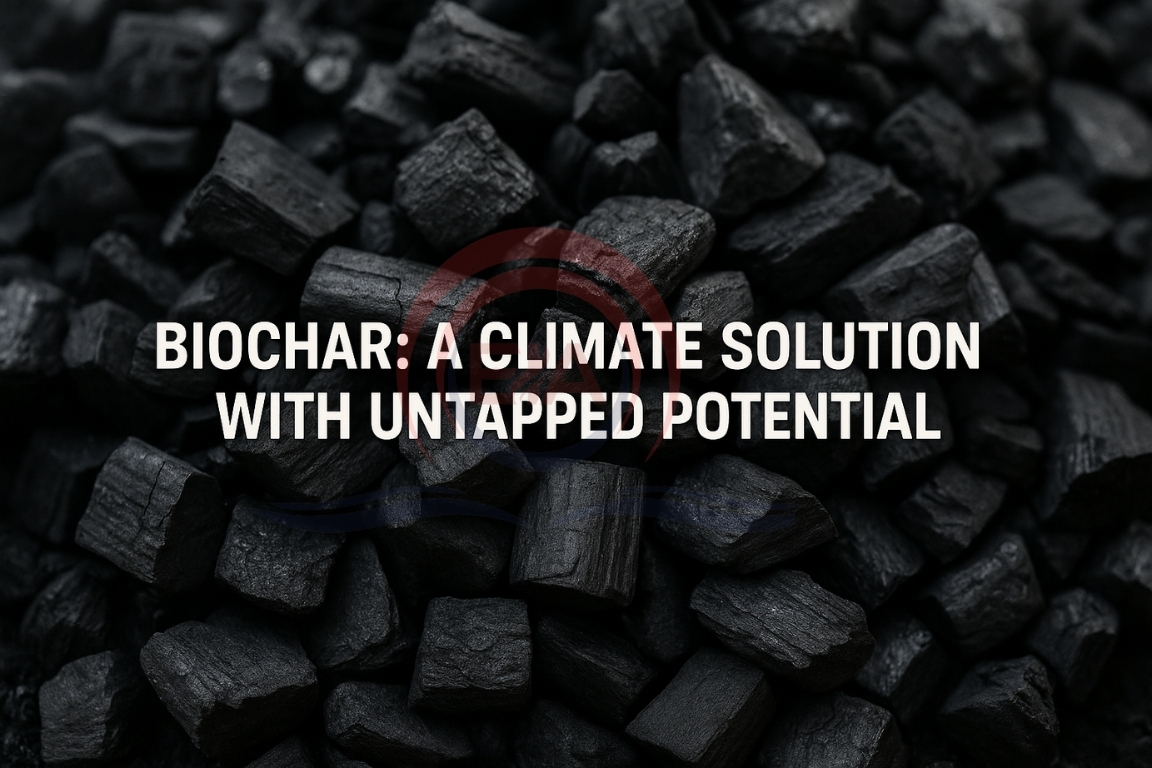The Great Nicobar mega infrastructure project has raised serious concerns over environmental harm, displacement of native tribes, and risks in an earthquake-prone region.
About the Project
- A multi-component development plan including a port, township, airport, and power plant.
- Located in Great Nicobar Island, which is home to unique biodiversity and two indigenous tribes. Project cost estimated at ₹72,000 crore.

Threats to Indigenous Communities
- Nicobarese Tribe: Their ancestral villages fall in the project zone. Already displaced during the 2004 tsunami, the project will permanently prevent their return.
- Shompen Tribe (PVTG): The Shompen Policy mandates protection of their welfare and lands. A large portion of their reserve has been denotified. Forest destruction and population influx may endanger their way of life.
Violation of Safeguards
- National Commission for Scheduled Tribes (NCST) not consulted, violating Article 338-A.
- The Tribal Council’s consent was taken under pressure and later revoked.
- Social Impact Assessment (SIA) ignored tribal concerns.
- Forest Rights Act, 2006 provisions were bypassed.
Ecological Concerns
- Massive Deforestation: Government estimates: cutting of 8.5 lakh trees. Independent estimates: between 32–58 lakh trees may be felled.
- Flawed Compensatory Afforestation: Planned in Haryana, far from Nicobar’s ecosystem. A quarter of the land earmarked was auctioned for mining. Cannot replace old-growth, biodiversity-rich forests.
- Coastal and Marine Risks: Part of the port site falls under CRZ 1A (protected turtle nesting and coral reef zone). National Green Tribunal flagged concerns, but a high-powered committee reclassified the zone.
Biodiversity and Wildlife Impact
- Nicobar long-tailed macaque and sea turtles face severe habitat disruption.
- Surveys on turtle nesting done in the off-season, making data unreliable.
- Dugong population assessment used drones unsuitable for deeper waters.
- Concerns raised by experts were disregarded.
Natural Disaster Vulnerability
- Earthquake-prone zone with high seismic risk.
- The 2004 tsunami caused land subsidence of 15 feet.
- A recent 6.2 magnitude earthquake (July 2025) shows ongoing risks.
- Building massive infrastructure here endangers people, investment, and ecology.
Way Forward:
- Ensure transparent consultations with tribal councils and NCST.
- Respect legal safeguards under FRA and SIA processes.
- Rethink large-scale construction in fragile, disaster-prone zones.
- Prioritise eco-sensitive and community-friendly development models.
Conclusion:
The Great Nicobar project, while presented as a development initiative, threatens to displace vulnerable tribes, destroy biodiversity, and expose the region to natural disaster risks. True progress must balance infrastructure with ecological and social justice.





